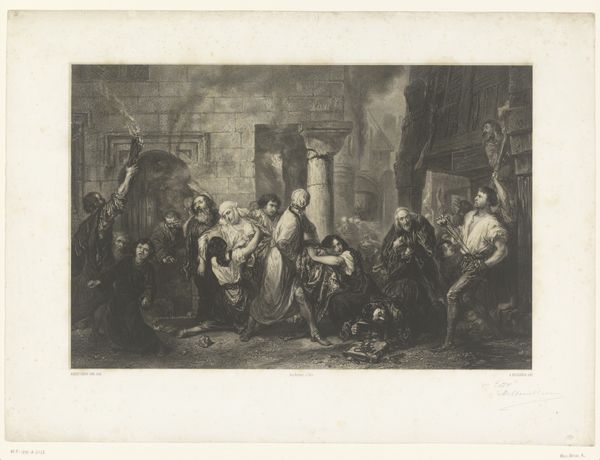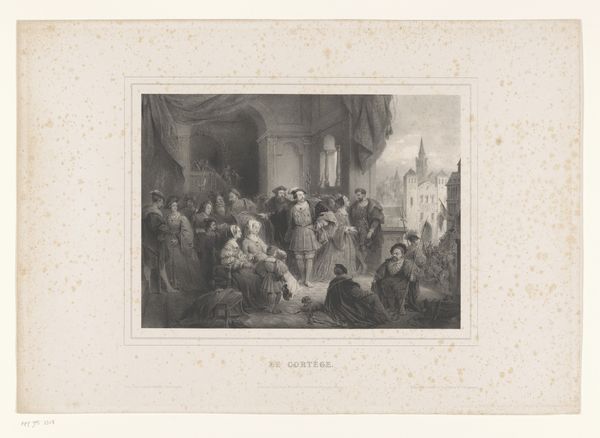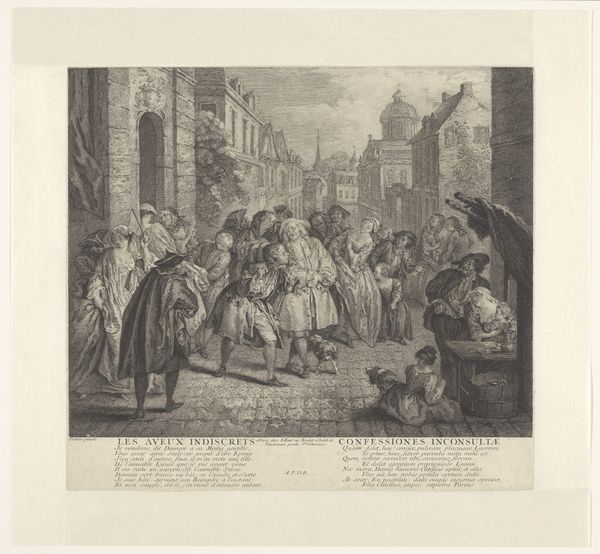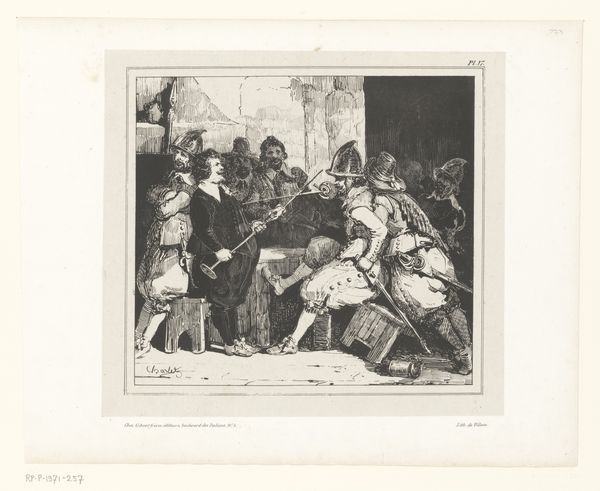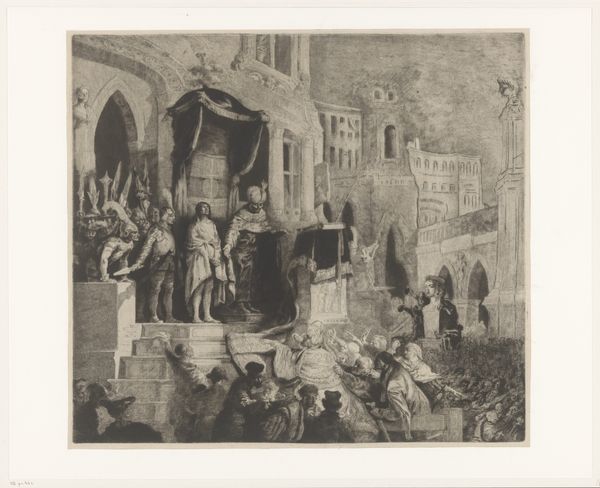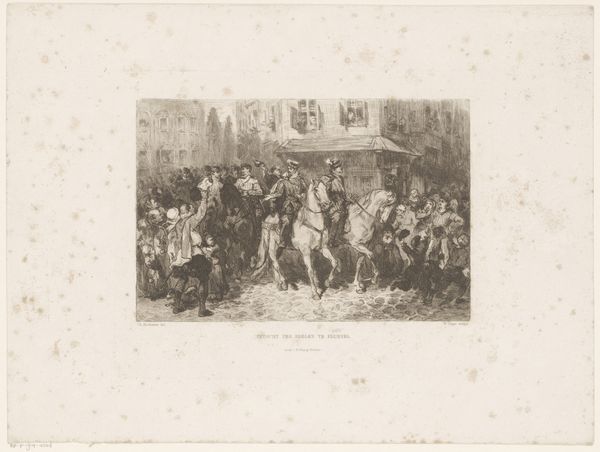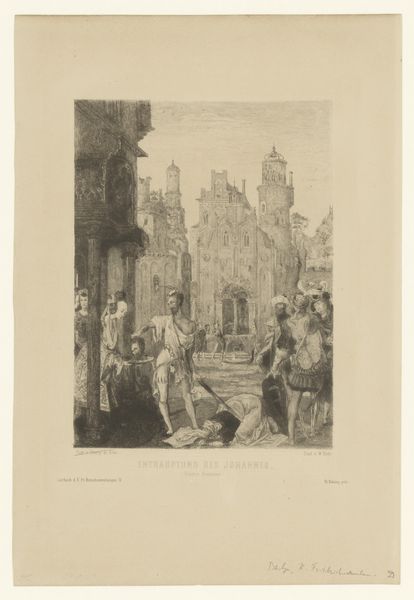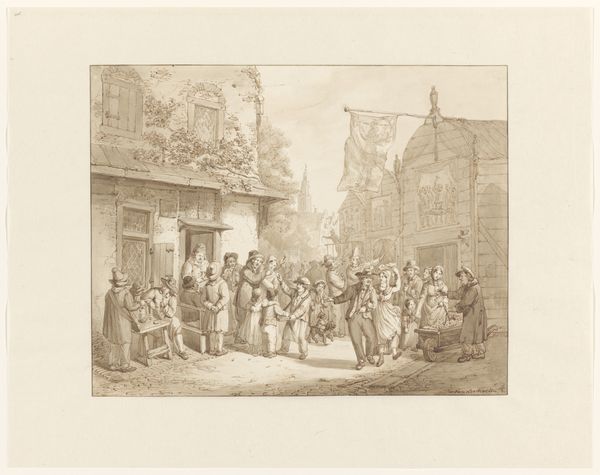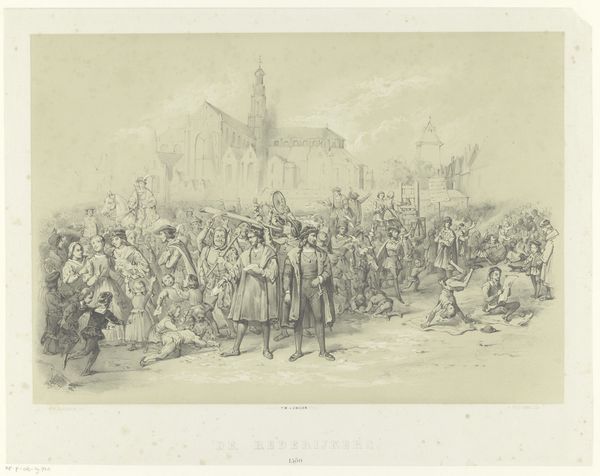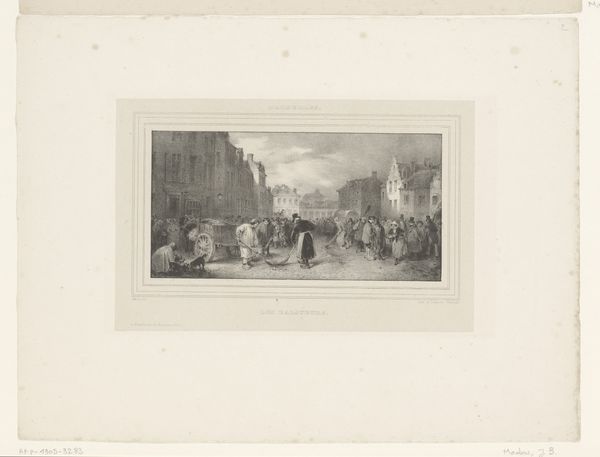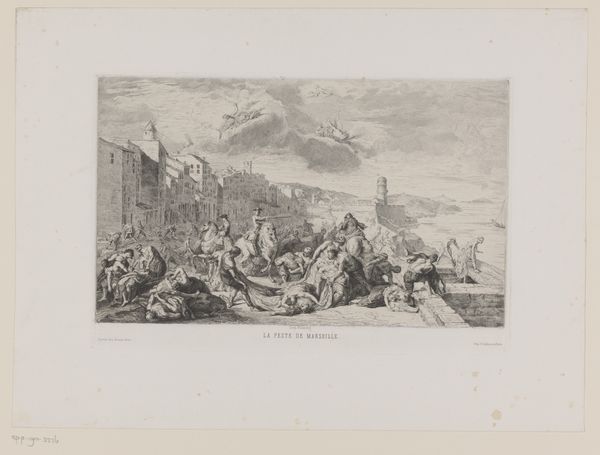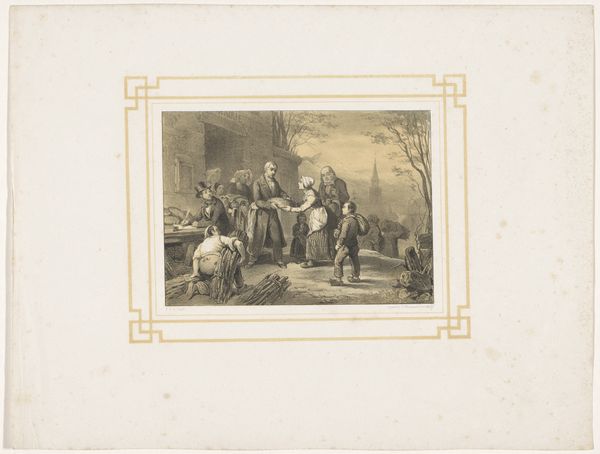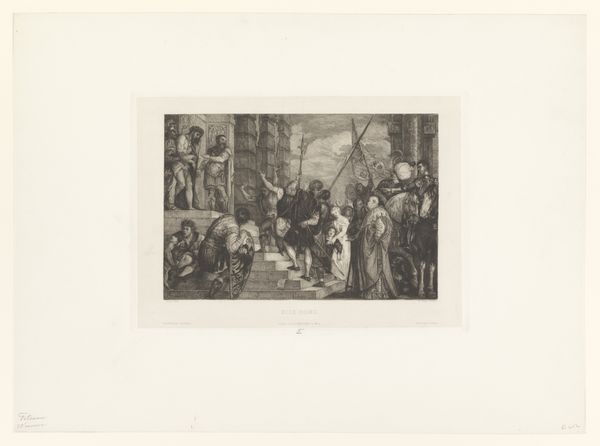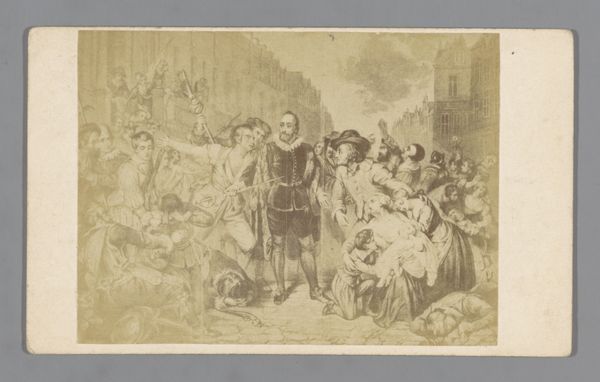
print, etching, paper, ink, engraving
#
narrative-art
# print
#
etching
#
paper
#
ink
#
cityscape
#
history-painting
#
engraving
#
realism
Dimensions: height 425 mm, width 554 mm
Copyright: Rijks Museum: Open Domain
Curator: Here we have Adolphe Mouilleron's engraving from 1852, titled "The Murder of James Stewart, Earl of Moray," currently held at the Rijksmuseum. Editor: It’s bleak, isn't it? A somber realism… almost journalistic. The figures are caught in this terrible, dramatic instant. I feel drawn into the chaos. Curator: Engravings such as these served as visual documentation, especially given the limitations of other visual mediums at the time. The process is painstaking, of course: each line etched into the plate, then printed. Editor: Absolutely. We see class dynamics starkly portrayed. A staged assassination within a tight urban fabric implicates social infrastructures and highlights hierarchies: powerful men on horseback juxtaposed against vulnerable bystanders. It feels performative, with a deliberate manipulation of power. Curator: Considering it’s a print, the detail is quite impressive. Notice the varied textures—the rough stone of the buildings, the fabrics of the clothing—achieved through different line weights and densities. Ink and paper become active components in shaping how we perceive texture and depth. Editor: And the spectators packed onto that raised balcony structure add to the sense of the everyday, ordinary, becoming a spectacle. Who profits politically and socially from Moray’s assassination? This piece screams historical turning points and shifting loyalties. Curator: It really makes you appreciate the skilled labor that went into creating these kinds of images. The planning and execution of such a scene on a metal plate require a deep understanding of materials and their interaction. Editor: Exactly. Mouilleron isn’t merely depicting history, he's implicated in interpreting and representing it through a material and social lens that's far from objective. It encourages a more nuanced interpretation. Curator: Agreed. When we look closely at Mouilleron's materials, we’re encountering more than a depiction of a historical event—it's a narrative embedded in production and dissemination of visual information. Editor: And it makes you wonder, how many other narratives were sidelined or silenced in the process? The visual culture in print became a powerful means to normalize certain power structures, right? Food for thought.
Comments
No comments
Be the first to comment and join the conversation on the ultimate creative platform.
